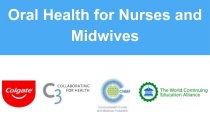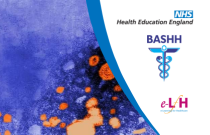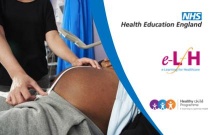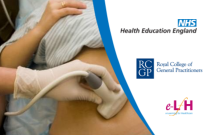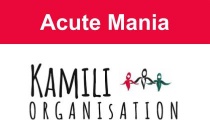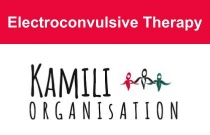SAFE SCHOOLS: Preventing School Violence
Mary Hunter
2.00 Hours
School safety has long been an issue, but in recent years, with high profile school violence episodes both nationally and internationally, as well as the growing realization that ongoing bullying is highly destructive, the focus on safety has increased. Local school districts, the New York State government, the federal governmen....
Paediatrics and Prescribing Update E-Learning Course
Gina Johnson and Ian Hill-Smith of the UK National Minor Illness Centre
The focus of this NMIC Masterclass is Paediatrics. We have an interactive e-learning, self-paced programme qualifying for 3 hours of CPD and including an update for Independent Prescribers. This course includes common skin conditions in babies and children, new NICE guidance on reflux, constipation and pneumonia, and controversi....
Crosswalk to Compliance: CMS Hospital CoPs Part IV
Sue Dill Calloway, RN, MSN, JD
Part IV of the series will cover QAPI, utilization review, physical environment, radiology, lab, dietary, and more!
Oral Health for Nurses and Midwives (November Update 2023)
Jill Iliffe
The Oral Health for Nurses and Midwives CPD course was developed in response to the call from the World Health Organisation for Universal health coverage for oral health for all individuals and communities by 2030. Recent research has provided evidence of close associations between oral health and other chronic non-communicable....
Session 2 - How to Have a MECC Conversation
Ashlee Mulimba, and Madeeha Iqbal
In this session, you will learn how to start a healthy conversation with someone about their health and well-being. This will include exploring how to support people to make informed choices about behaviour change.
Session 3 - Signposting
Ashlee Mulimba, and Madeeha Iqbal
In this final chapter you will learn how information sharing and signposting is an integral part of Making Every Contact Count (MECC). You will also find out how to provide accurate, current, and relevant materials in sufficient supply to your client and signpost to other health improvement services.
Five ways to wellbeing
Gregor Henderson
This session enables you to be confident in talking with clients and patients about the things they can do to help improve and maintain their wellbeing. This will help in giving your patients the confidence they need about staying physically and mentally well. The session will also help provide a good understanding for how yo....
Sickle Cell Disease: Genetics and Diagnostics
The Hospital for Sick Children (SickKids) and Ghana College of Nurses and Midwives
Sickle Cell Disease in Ghana: Genetics and Diagnostics is a course that provides healthcare workers with a foundational understanding of sickle cell disease. The course features interactive content that will explain what sickle cell disease is and the genetics underlying this inherited blood disorder. Finally, the importance of....
Sickle Cell Disease: Promoting Health for Children and Adolescents
The Hospital for Sick Children (SickKids) and Ghana College of Nurses and Midwives
Sickle Cell Disease: Promoting Health for Children and Adolescents explores the lived experience of children and adolescents with sickle cell disease and their families. The course features interactive content that will provide healthcare workers with the knowledge they need to improve care, quality of life, and health outcomes....
Hepatitis B & C and HIV Co-infection
Janice Main and Gary Brook
This session provides an overview of HIV/hepatitis (B and C) co-infection. It builds on your knowledge of viral hepatitis natural history, presentation, investigation and management.
Hepatitis B: Management
Jane Collier and Gary Brook
This session describes the indications for treating hepatitis B, treatment options and how to monitor treatment.
Pre-operative Management of Endocrine Disorders
Ridzuan Farouk
This session identifies common causes of hyperthyroidism and hypothyroidism. It describes classification of hyperparathyroidism. Disorders of the adrenal and pituitary gland are then outlined.
Health Promotion in Pregnancy: Obesity
Eugene Ntim and Nina Khazaezadeh
This session aims to raise awareness regarding obesity in pregnancy and its contribution to increased morbidity and mortality for the woman and her baby.
Childhood Obesity
Faye McCleery and Sunaina Khanna
This session explores the diagnosis, management and prevention of childhood obesity. It also looks at how to identify and manage obesity-related comorbidity.
Acute Mania
Pius Mwangi and Simon Githui
We welcome you to this module on acute mania. The aim of this two-hour module is to give you more insights on how best to identify, manage and prevent acute mania. You will also learn more about the role of a nurse in management of acute mania. This module has, at the tail end, five multiple choice questions that you can use to....
Electroconvulsive Therapy
Pius Mwangi and Simon Githui
Welcome to this module on Electroconvulsive Therapy (ECT). We shall discuss the historical development of ECT, describe how ECT works and the procedure for ECT administration. We shall at the end explore the role of the nurse during administration of ECT. This is two-hour module, and we encourage you to take short notes as you p....
The Child With a Swollen Joint
Sharmila Jandial and Helen Foster
This session describes approaches to the assessment and management of children presenting with one or more swollen joints. This session was reviewed by Khyati Bakhai and last updated in January 2022.
Foot Pain
Adrian Dunbar
Foot pain is a common presentation in primary care. This session considers patients presenting with heel, midfoot and forefoot pain and follows their presentation, assessment and management. This session was reviewed by Khyati Bakhai and last updated in January 2022.
Osteoporosis
Anne Sutcliffe
This session examines a range of risk factors for osteoporosis and considers appropriate investigations and treatment options for the disease. Lifestyle implications are also discussed. This session was reviewed by Khyati Bakhai and last updated in August 2019.
The Limping Child
Iain Goff and Helen Foster
This session considers the assessment, examination and treatment of limps in children. Red flag symptoms are described along with an overview of the consequences of a late diagnosis of conditions such as septic arthritis, Perthe’s disease, slipped capital femoral ephiphysis and inflammatory arthritis. This session was reviewe....
Heart Failure in End of Life Care
Amy Gadoud, Karen Hogg, Shona Jenkins and Yvonne Millerick
This session has been written by a multidisciplinary group of cardiology and palliative care specialists to help palliative care clinicians become more confident with managing patients with heart failure and knowing when to liaise with heart failure services.
The Advocating and Educating for Quality Improvement (A-EQUIP) Model
Clare Capito and Emma Wadey
The A-EQUIP framework is deployed by the Professional Midwife Advocate (PMA) and more recently by the Professional Nurse Advocate (PNA) roles. This elearning resource explores the A-EQUIP model from a conceptual and practical perspective, and also demonstrates how it can support a midwife or nurse in practice. There is an....
Interstitial Lung Disease Case Studies
Rathai Anandanadesan
This session considers different types of interstitial lung disease and key investigations used to arrive at a diagnosis. The different treatment and management options available for patients are also covered.
Examination of a 20-year-old Woman with Episodes of Breathlessness
Niki Roberts
This session discusses how to perform a focused, problem-based physical examination on an adult presenting with episodes of breathlessness in primary care.
Mediastinal Nodal Disease
Hilary Moss
In this session, we look at identification of normal and abnormally enlarged lymph nodes on the plain chest x-ray (CXR) and computed tomography (CT).


